Experience the world with us
Friday, June 28, 2013
Thursday, June 20, 2013
How Hieroglyphics were Originally Translated
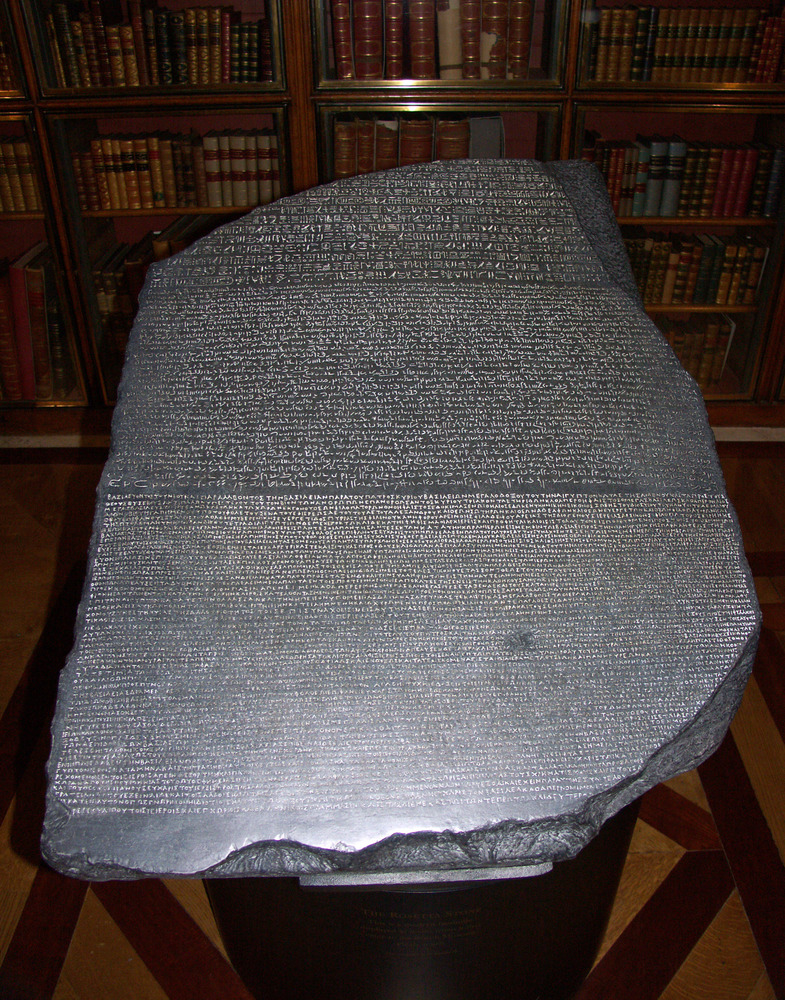
Hieroglyphics were elaborate,
elegant symbols used prolifically in Ancient Egypt. The symbols decorated
temples and tombs of pharaohs. However, being quite ornate, other scripts were
usually used in day-to-day life, such as demotic, a precursor to Coptic, which
was used in Egypt until the 1000s. These other scripts were sort of like
different hieroglyphic fonts—your classic Times New Roman to Jokerman or
Vivaldi.

Unfortunately, hieroglyphics
started to disappear. Christianity was becoming more and more popular, and
around 400 A.D. hieroglyphics were outlawed in order to break from the
tradition of Egypt’s “pagan” past. The last dated hieroglyph was carved in a
temple on the island of Philae in 395 A.D. Coptic was then written and spoken—a
combination of twenty-four Greek characters and six demotic characters—before
the spread of Arabic meant that Egypt was cut off from the last connection to
its linguistic past.

What remained were temples and
monuments covered in hieroglyphic writing and no knowledge about how to begin
translating them. Scientists and historians who analyzed the symbols in the
next few centuries believed that it was a form of ancient picture writing.
Thus, instead of translating the symbols phonetically—that is, representing
sounds—they translated them literally based on the image they saw.
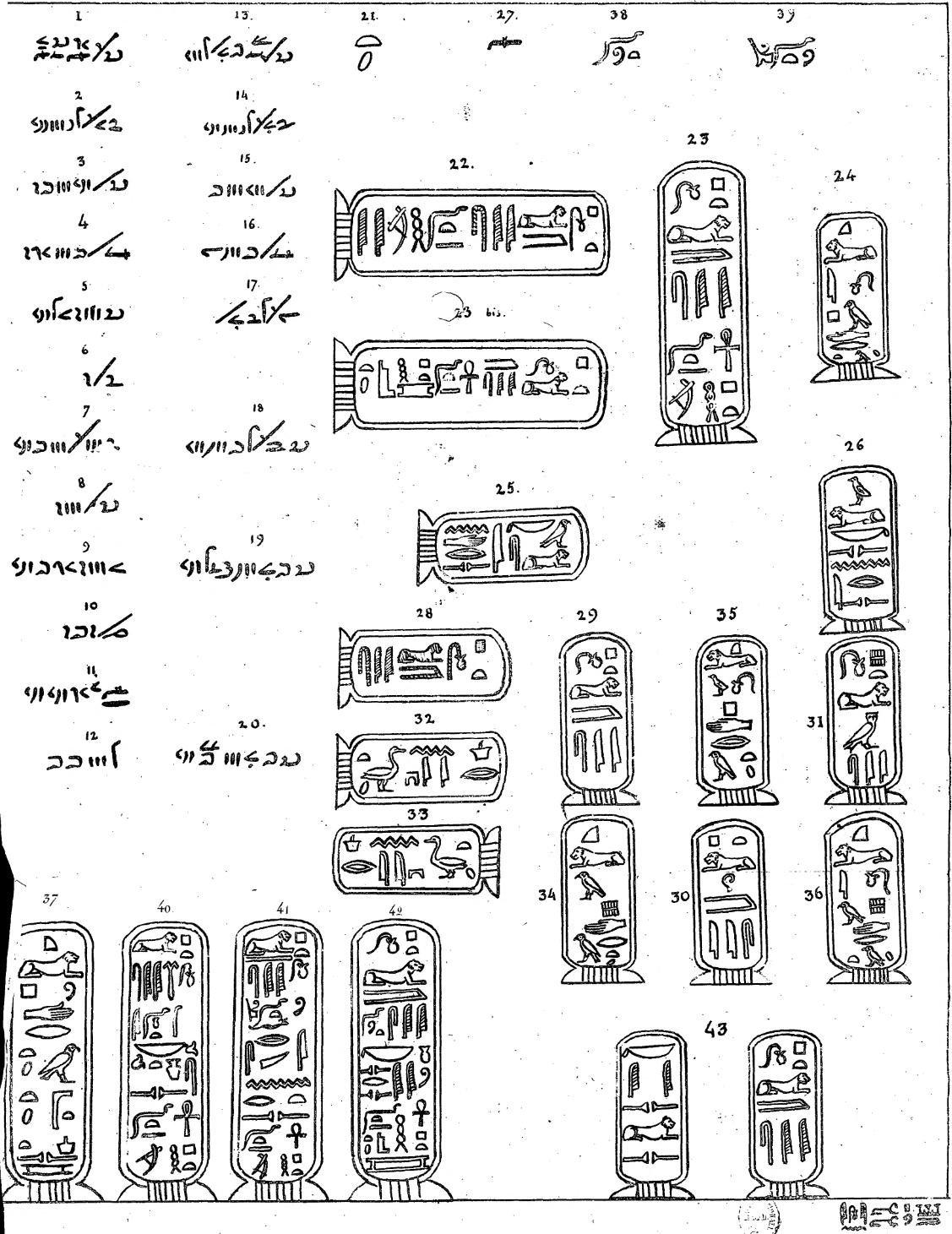
It wasn’t until July 19, 1799
when a breakthrough in translation was discovered by French soldiers building
an extension on a fort in el-Rashid, or Rosetta, under the orders of Napoleon
Bonaparte. While demolishing an ancient wall, they discovered a large slab of
granodiorite bearing an inscription in three different scripts. Before the
French had much of a chance to examine it, however, the stone was handed over
to the British in 1802 following the Treaty of Capitulation.
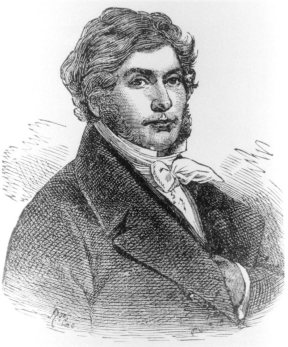
On this stone, known as the
Rosetta Stone, the three scripts present were hieroglyphics, demotic, and
Greek. Soon after arriving at the British Museum, the Greek translation
revealed that the inscription is a decree by Ptolemy V, issued in 196 B.C. in
Memphis. One of the most important lines of the decree is this stipulation laid
down by Ptolemy V: “and the decree should be written on a stela of hard stone,
in sacred writing, document writing, and Greek writing.” The “sacred writing”
was hieroglyphics and “document writing” referred to demotic—this confirmed
that the inscription was the same message three times over, providing a way to
begin translating hieroglyphics at last!

One of the big problems
encountered was that they could try to translate written text all they wanted,
but it wouldn’t give the translators an idea of the sounds made when the text
was spoken. In 1814, Thomas Young discovered a series of hieroglyphs surrounded
by a loop, called a cartouche. The cartouche signified something important,
which Young hypothesized could be the name of something significant—kind of
like capitalizing a proper noun. If it was a pharoah’s name, then the sound
would be relatively similar to the way the names are commonly pronounced in
numerous other languages where we know the pronunciation.
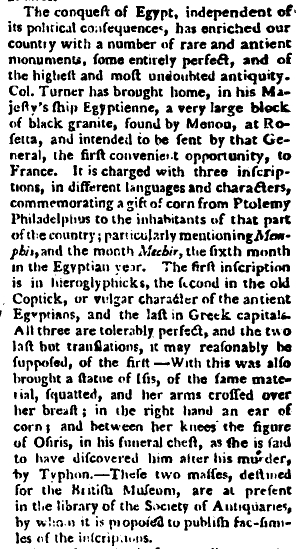
However, Young was still
working under the delusion that hieroglyphs were picture writing, which
ultimately caused him to abandon his work which he called “the amusement of a
few leisure hours”, even though he had managed to successfully correlate many
hieroglyphs with their phonetic values.
A few years later,
Jean-Francois Champollion finally cracked the code in 1822. Champollion had a
long-time obsession with hieroglyphics and Egyptian culture. He’d even become
fluent in Coptic, though it had long since become a dead language. Using
Young’s theory and focusing on cartouches, he found one containing four
hieroglyphs, the last two of which were known to represent an “s” sound. The
first one was a circle with a large black dot in the centre, which he thought
might represent the sun. He dug into his knowledge of the Coptic language,
which he hadn’t previously considered to be part of the equation, and knew that
“ra” meant “sun.” Therefore, the word that fit was the pharaoh Ramses and
the connection between Coptic and hieroglyphics was now perfectly clear.
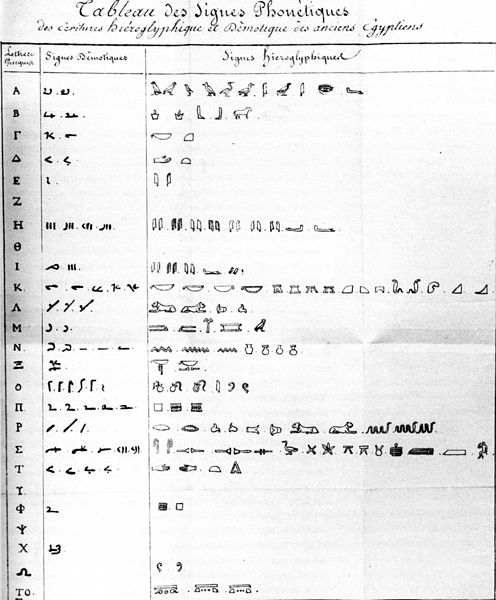
Champollion’s research provided
the momentum to get the ball rolling on hieroglyphic translation. He now
demonstrated conclusively that hieroglyphics weren’t just picture writing, but
a phonetic language. Champollion went on to translate hieroglyphic text in the
temples in Egypt, making notes about his translations along the way. He
discovered the phonetic value of most hieroglyphs. It was a good thing he kept
extensive notes, too as he suffered a stroke three years later and died at the
age of 41. Without those notes, much of the progress made on the translations
would have been lost.
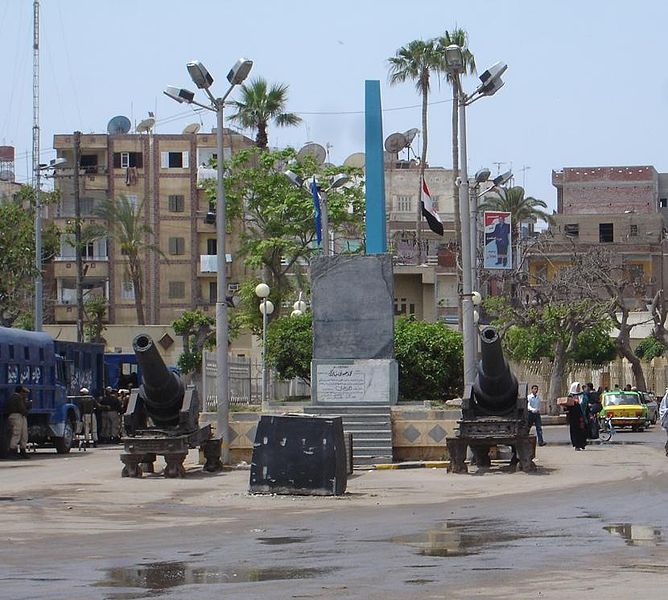

Taken from: http://www.todayifoundout.com/index.php/2013/06/how-hieroglyphics-were-originally-translated/ [20.06.2013]
Click here if you want to go to Egypt
Thursday, June 13, 2013
Maasai Mara, Home of the Great Wildebeest Migration in Kenya
The annual Wildebeest Migration at the Maasai Mara is a natural cycle that
replenishes and renews the grasslands of East Africa. Each June, around
1.3 million Wildebeest gather in the Serengeti to calve.
They slowly
mass into a huge single herd, until the dry season withers their supply
of fresh grass.
The scent of rain to the North begins to draw the herd throughout July,
and soon the planet’s greatest animal migration is underway.
This is one of the remarkable wildlife attractions that make's Kenya one
of the best wildlife destinations in the world. Kenya’s most popular
attraction, the Mara was awarded its title for its sheer volume and
variety of game.
One traveller summed up the appeal of the Maasai Mara Reserve;
“This is the total sensory experience holiday. Your senses are
constantly stimulated by the sights, smells and sounds of the Mara and
its many inhabitants. The thrill of leaving camp at dawn, in search of
big cats is an experience that is difficult to repeat.”
There is no better time to visit the Mara than during the Great Migration. The sound of the approaching herd is a deep, primal rumbling of thundering hooves and low grunts.
There is no better time to visit the Mara than during the Great Migration. The sound of the approaching herd is a deep, primal rumbling of thundering hooves and low grunts.
The sight of the wildebeest is staggering- a continuous charging mass
that stretches from one horizon to the other this endless grey river of
life is mottled with black and white as zebras join the throng.
Over the course of the migration, visitors to Kenya will have the
opportunity to follow the progress of the herds and experience the full
grassland cycle firsthand.
In the Maasai Mara, Africa’s largest concentrations of predators are
drawn to this perfect opportunity for easy hunting. Lions are frequently
seen attacking the herds - especially at night- dragging down
straggling individuals.
At the same time, packs of Hyena freely weave throughout the herds, singling out and separating the young and the weak.
Predators are not the only obstacles that the wildebeest face. Kenya’s
heavy rainfall in the highland Mau escarpment has turns the Mara River
into a raging torrent.
As happens each year, the herds will gather at the banks in preparation for the most perilous stretch of their journey.
As sheer pressure builds, the herds are finally forced to surge into the river, often hurling themselves off high banks.
In the struggle across the Mara River, many are drowned or swept away by
strong currents. The crossing attracts massive crocodiles who each year
awaits this season of bounty.
By September the herds will begin reaching their goal, and spreading out to graze across the expanse of the Mara.
For this beautiful game reserve, it is a time of renewal, as the dung
from the visiting herds fertilizes the plains. October will see the
herds turn southward and repeat the same journey back to the Serengeti,
where the renewed grasslands await.
The Migration is the planet’s last great epic of life and death. Of all
the calves born in the Serengeti, two out of three will never return
from their first and most demanding migration.
It is this inextricable binding of renewal and sustenance, feast and
famine, life and death that makes this event one of nature’s greatest
wonders.

The migration can be experienced on early morning game drives in customized vehicles, walking safaris with Maasai Warrior guides, horseback safaris in areas surrounding the Mara, or even from hot air Balloon safaris over the herds.
Taken from: http://www.magicalkenya.com/index.php?option=com_content&task=view&id=194&Itemid=194 [13.06.13]
Subscribe to:
Posts (Atom)





















